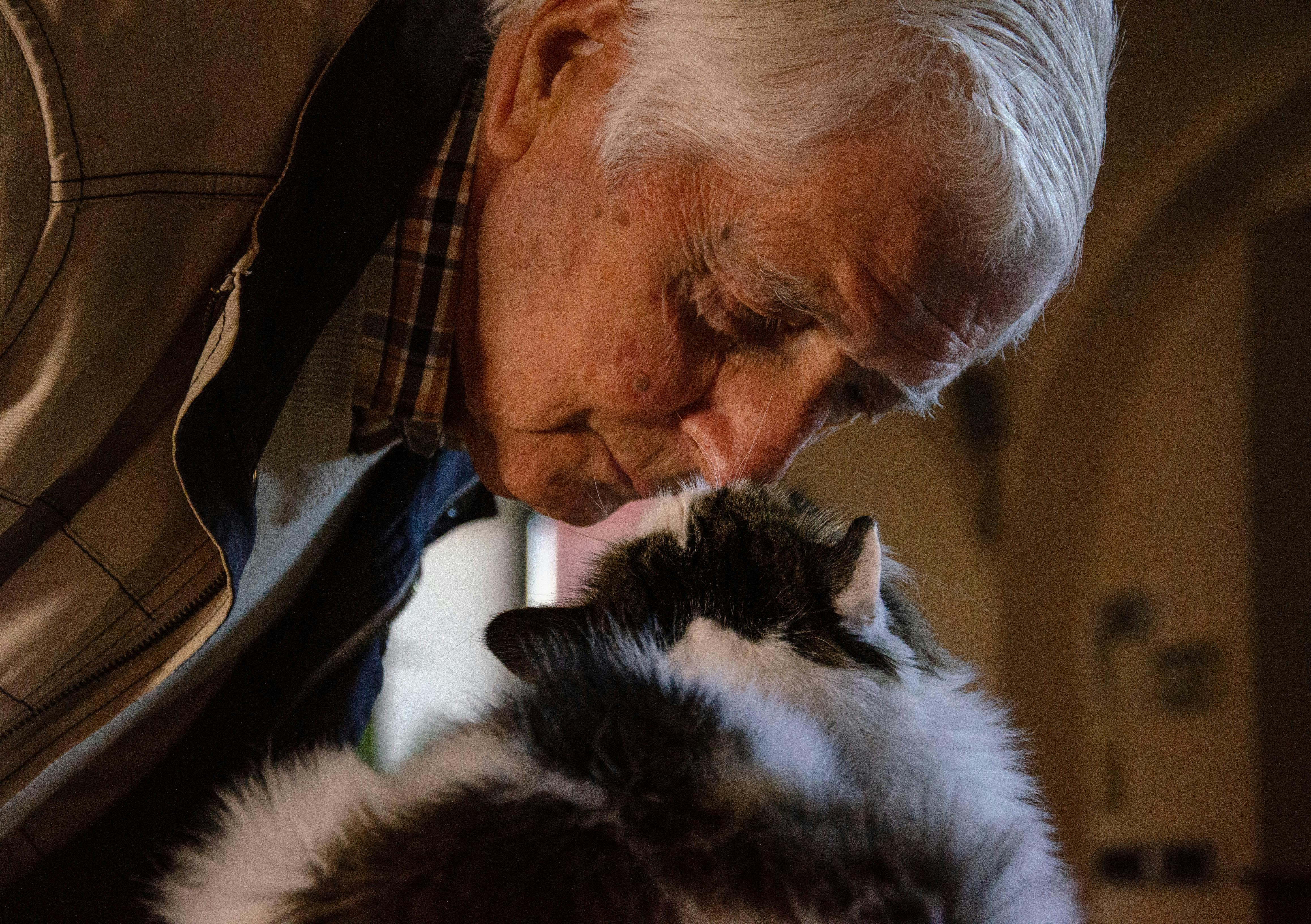Updated: 6/23/2021
It’s tough getting old! Aches and pains, changes in mood,
sleeping and eating habits, and even loss of memory are all issues that can
arise from the natural aging process, something cats share with their humans. But
cats have a secret weapon as they reach their golden years- their loving owners!
Since we know our kitties best, we can see when they are
slowing down, or going through physical or mental changes as they age. Helping
our furry felines navigate these changes can mean all the difference between a
scared and confused elderly feline, and one who feels safe and confident.
In this guide, we’ll explore some simple tips that can help
your elderly cat be more comfortable, while addressing their changing needs.
But first, let’s take a look at what can happen to an aging cat.
Kittens sure do have a lot of energy! Grown cats are usually
still playful and energetic, but as they hit their senior years between 11 to
14, they may behave quite differently. Due to beneficial changes in pet
nutrition and health care, some cats are even living into their early twenties!
That’s like 80 to 100 years old in human years! These geriatric critters often experience
decreased energy levels, increased sleeping times, and even some new behavioral
issues.
Some people may think that their cat is just getting older,
but any changes in eating, sleeping and eliminating could point to a medical
issue. Your elderly cat could be experiencing conditions such as:
While you can’t stop your cat from the natural aging
process, you can help them get through age-related issues safely by taking a
few extra steps.
Even if your cat
sleeps a lot
more, has trouble getting up the stairs, or sometimes forgets where they are,
they are still the same loving furiend you know and love, and would surely
appreciate a helping hand. Make life easier for your pal with these simple
steps.
#1 Make the Litter Box More Accessible
If your cat is eliminating outside the box, they could be
suffering from arthritis,
kidney disease or
digestive issues. They could also furget where the box is due to
cognitive
dysfunction syndrome. Help them access their bathroom by keeping the walls
of the box low to make getting in and out easier, put litter boxes on every
floor of the house, and find quiet areas that won’t startle your cat when using
the box.
Cleaning litter boxes more frequently can also encourage your
cat to keep going there, and gives you an insight into their health. If
urination is more frequent, it could be a sign of diabetes, kidney disease or
high blood pressure, while changes in bowel elimination could alert you to
constipation
and other digestive issues.
#2 Make Stairs and Jumps Easier
The loss of mobility is common in older cats, and can range
from mild to severe. The pain of
arthritis is often
the cause, although some cats can experience muscle weakness too. These issues
can stop a cat in their tracks and limit where they can go.
Help your furry bestie get to his favorite chair or
windowsill perch by buying or making carpeted ramps or pet stairs to make the
journey less painful. If stairs are the issue, build extra stairs or small
ramps on one side of the steps to give them secure footing that’s easier to
navigate.
#3 Choose Bedding for Comfort
Arthritic and mobility-challenged kitties may also need some
extra padding and warmth to be comfortable enough to get their rest, so take a
look at your cat’s bed and sleeping areas. Ideally, providing cushier beds and
bedding can give them the comfort they seek. Memory foam cushions bones and muscles
to allow a deeper and more satisfying sleep.
Older cats are often more sensitive to cold too, so while you
are placing their beds in easy to reach places, be aware of drafty areas to
avoid. Adding another blanket can help them retain more heat, but steer clear
of
electric
blankets as they are not only dangerous if chewed on, but can get too hot
for cats.
#4 Provide the Right Nutrition
As your cat ages, they may need
special
diet considerations, especially if they are dealing with a medical issue.
They also are more at risk of
dehydration due to lack
of mobility, a dry food only diet, and certain conditions, such as
deteriorating kidney function.
Talk with your veterinarian about the right diet and
nutritional needs for your cat and their particular situation, and consider
adding in
wet
food that is higher in moisture to combat the risk of dehydration. Senior
cat formulas often have fewer calories along with extra fiber,
fatty acids,
vitamins, and sometimes probiotics to help support their bodies. Create several
food and water stations in easy to access areas, such as on each level of the
house, or in the same room as their bed or litter box. Monitor how much they
are eating and drinking to gauge their changing health needs.
#5 Lend an Extra Paw for Grooming
If you’ve ever been to a nursing home, you’ve seen how some
older folks are unable to take care of themselves. Cats can also suffer from medical
issues that stop them from basic grooming too, such as painful arthritis. If
your cat stops grooming, lend a helping “paw” by gently brushing, bathing and
grooming your cat. Regular grooming and petting not only improves their circulation,
but it also deepens your bond and can help your cat feel safe.
Longhaired cats can quickly develop matted hair, so creating
a routine grooming time can help you stay ahead of the problem. You can also
trim up areas around
their backend to help keep them clean. And don’t furget to trim those kitty claws so they don’t overgrow
into their soft paw pads!
#6 Increase Vet Visits
While veterinarians generally recommend yearly visits for cats,
once they hit their senior years, they’ll need more attention. A check-up every
six months is recommended for elderly cats to monitor their changing condition.
You’ll want to discuss any changes in sleeping, eating, elimination or behavior
that you’ve noticed with your veterinarian. Routine dental check-ups are also
critical as many older cats experience issues with their teeth such as
pain or
tooth
loss that
can affect their eating.
The good news is that your vet can often recommend medications
and treatments to help any issues that arise, as well as make suggestions to
help your cat at home. Catching certain conditions early can even slow down
their development and extend your cat’s mobility and years.
#7 Spread On the Love
While some older cats may become more independent, many will
savor those cuddle and bonding sessions with you more than ever. Having your
support and love can go a long way to reducing your cat’s stress and
anxiety, and
give them the reassurance they need that they are being taken care of.
This is especially true if your cat has lost their sight,
hearing or mental
faculties, as your touch and care can literally be life-saving. Give your cat
all the attention they crave, while providing physical and
mental
stimulation with increased petting and playtimes to keep your cat feeling
safe and absolutely loved.


